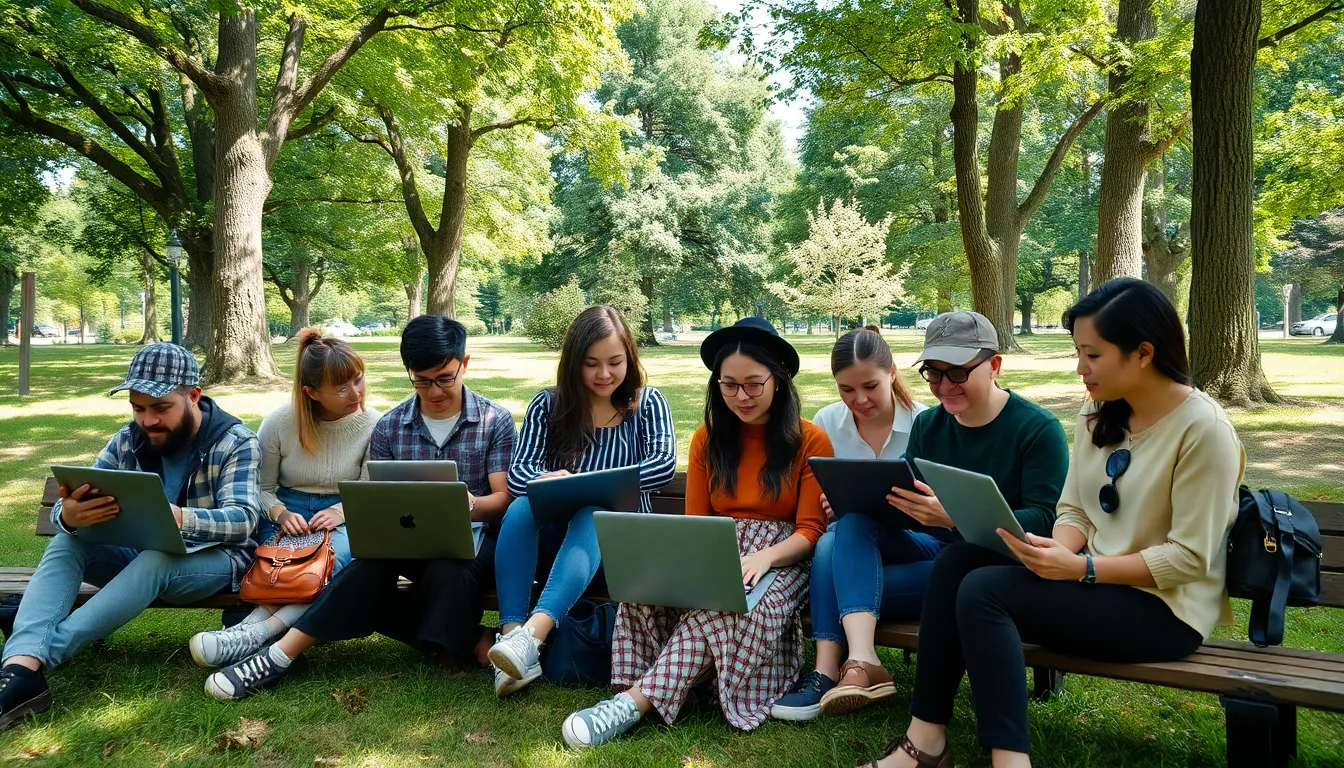Table of Contents
ToggleIn a world where screens dominate our lives, finding a balance with technology feels like juggling flaming swords—exciting but a bit dangerous. Everyone’s glued to their devices, but when did it become a contest for who can scroll the longest? It’s time to hit the pause button and rethink our relationship with technology.
Understanding Technology Balance
Technology balance refers to the ability to manage technology use in a way that promotes well-being and productivity while minimizing negative impacts. This balance involves finding the right mix between engaging with devices and enjoying offline activities.
Definition of Technology Balance
Technology balance means using digital devices mindfully and purposefully. It encompasses managing screen time, understanding when to unplug, and engaging with the physical world. Healthy technology use involves prioritizing personal connections, mental health, and physical activity. Striking this balance leads to better focus, relationships, and overall quality of life.
Importance of Technology Balance
Maintaining technology balance remains crucial in today’s digitally dominated society. Excessive screen time correlates with anxiety, depression, and social isolation. By setting boundaries, individuals can enhance mental clarity, reduce stress levels, and cultivate meaningful connections. Prioritizing balance also fosters productivity, allowing for better time management and work-life harmony. Achieving this equilibrium ultimately contributes to personal well-being and a healthier lifestyle.
The Impact of Technology on Daily Life

Technology shapes everyday experiences in profound ways. While it offers advantages, it also presents challenges that require careful management.
Positive Effects of Technology
Enhanced communication stands out as a major benefit of technology. People connect instantly, regardless of their physical locations. Access to information becomes effortless through the internet, enabling rapid learning and decision-making. Innovations in healthcare improve patient outcomes as telemedicine and wearable devices monitor health conditions. Productivity increases with tools designed for collaboration, allowing teams to achieve more in less time.
Negative Effects of Technology
Excessive screen time poses serious health risks. Studies link long hours in front of devices to increased anxiety and depression. Social skills often decline, as face-to-face interactions decrease. Sleep disruptions arise due to blue light emitted by screens, leading to fatigue and reduced performance. Addiction to technology can lead to isolation and neglected personal relationships, creating further strain on mental health. Maintaining balance is essential to mitigating these adverse effects and fostering a healthier lifestyle.
Strategies for Achieving Technology Balance
Achieving technology balance requires intentional strategies that foster mindful use of devices. Setting boundaries and emphasizing face-to-face interactions are two effective strategies.
Setting Boundaries
Establishing clear boundaries with technology helps manage its influence. Individuals can designate specific time slots for device usage, which reduces distractions during crucial tasks. Limiting notifications prevents constant interruptions, allowing focused work. Additionally, creating tech-free zones, such as dining areas or bedrooms, promotes healthier environments. Using apps that track screen time provides awareness about usage patterns. Awareness can motivate change, as individuals gain insight into time spent on devices. These steps encourage a more purposeful relationship with technology, enhancing overall well-being.
Emphasizing Face-to-Face Interactions
Prioritizing face-to-face interactions significantly improves social connections. Spending quality time with family and friends strengthens relationships and reduces feelings of isolation. Engaging in conversations without screens fosters deeper connections and enhances communication skills. Participating in group activities, such as sports or community events, offers valuable experiences that digital interactions often lack. Individuals can also schedule regular gatherings to reinforce these connections. By deliberately choosing real-life interactions, people can counterbalance technology’s impact and promote mental well-being.
The Role of Technology in Mental Health
Technology significantly affects mental health. Understanding its impact helps individuals navigate daily life more effectively.
Effects of Excessive Usage
Excessive screen time often leads to heightened anxiety and depression. Studies link prolonged digital engagement to increased feelings of loneliness. Sleep disruptions frequently arise from late-night device usage, causing fatigue and irritability. Social skills may decline due to decreased face-to-face interactions. Relationships suffer when individuals prioritize devices over personal connections. Strained family dynamics reflect an over-reliance on screens.
Benefits of Mindful Technology Use
Utilizing technology mindfully fosters improved mental health and well-being. Intentional device usage encourages deeper relationships and enhances communication skills. Setting boundaries allows for greater focus on both personal and professional priorities. Engaging meaningfully with technology strengthens social connections. Taking regular breaks from screens promotes mental clarity and reduces stress. Prioritizing in-person interactions cultivates a sense of belonging and community.
Finding technology balance is essential for fostering a healthier lifestyle. By setting boundaries and prioritizing meaningful interactions, individuals can mitigate the negative effects of excessive screen time. Embracing mindful device use not only enhances mental clarity but also strengthens personal connections.
As society continues to navigate the digital landscape, it’s crucial to take intentional steps toward a balanced relationship with technology. This approach promotes overall well-being and enriches life experiences. Ultimately, achieving technology balance is about making conscious choices that support mental health and cultivate deeper relationships.








